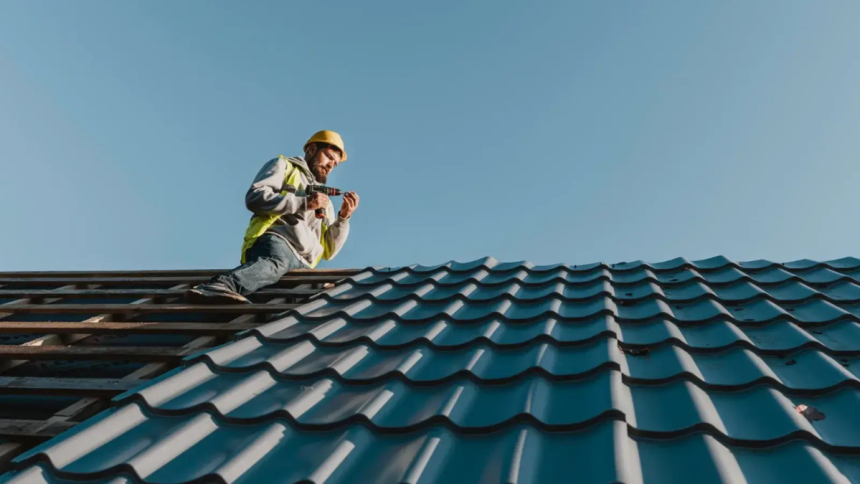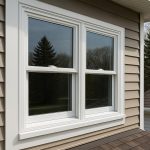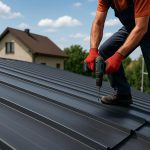Roofs may be built to last, but no roofing system is permanent. Like every part of a home, your roof has a lifecycle—from its first day of installation to the moment it’s due for replacement. Understanding this progression helps homeowners anticipate costs, schedule maintenance strategically, and avoid emergencies that could otherwise catch them off guard.
From the initial selection of roofing materials to the final signs of deterioration, every phase plays a role in how well a roof performs. Rather than waiting for visible signs of failure, property owners can plan proactively by recognizing the key milestones that define a roof’s lifespan.
Let’s walk through each major stage in the life of a roof and what you should expect along the way.
1. Installation: The Foundation of Roof Longevity
It all starts with installation. The quality of your roof installation can either set your system up for decades of success—or accelerate its decline. A properly installed roof aligns all materials, layers, and flashing in a way that protects against water, wind, and temperature extremes.
This stage isn’t just about laying shingles. It involves selecting appropriate underlayment, securing ventilation pathways, and ensuring that flashing is sealed around all penetrations such as chimneys, vents, and skylights. Poor workmanship or rushed installation often leads to early roof repair needs within just a few years.
That’s why homeowners should take time vetting their roofing contractor. An experienced roofing company will factor in local climate, pitch, drainage, and load-bearing considerations when recommending a system.
2. Early Years: The Adjustment Period
Once installed, a roof goes through what might be considered its adjustment phase. During this time—generally the first 2 to 5 years—it faces exposure to local environmental conditions and settles into its role. Minor expansion and contraction due to seasonal changes are normal, especially for materials like metal or asphalt shingles.
This is also when manufacturing or installation defects, if present, are most likely to appear. Keeping a close eye on performance in these early years is critical. Homeowners may want to schedule their first roof inspection around the 2-year mark, just to establish a baseline.
Most reputable materials come with warranties that begin coverage from day one, so identifying issues early helps you take advantage of that protection before warranty terms expire.
3. Mid-Life: Performance and Routine Maintenance
Between years 5 and 15 (or longer, depending on material), the roof enters its middle life stage. This is when it should perform reliably with minimal issues—provided regular maintenance is conducted.
Seasonal inspections become more important at this point. Common tasks include clearing debris, checking seals around flashing, and verifying that gutters and downspouts are clear. Roof repair needs during this period are usually minor: replacing a shingle here, re-caulking flashing there.
Homeowners who overlook this stage often accelerate the need for roof replacement. What might have been a simple fix—like sealing a leak—can become a widespread issue if left unattended.
In humid or coastal regions, this is also when algae, moss, or corrosion may begin to appear. These conditions not only affect appearance but also compromise material performance.
4. Signs of Aging: Late-Stage Wear
Toward the end of its life, a roof will begin showing unmistakable signs of wear. These usually become noticeable between years 15 and 25 for asphalt shingles, and between years 30 and 50 for materials like tile, metal, or slate.
During this phase, keep an eye out for:
- Granule loss on asphalt shingles
- Cracked or curling edges
- Recurring leaks despite patching
- Discoloration or mold growth
- Sagging or soft spots in the structure
- Blistering or seam separation in membrane systems
Roof repair can still be useful during this stage, especially to extend functionality while planning for full replacement. However, it’s important not to over-invest in short-term solutions if widespread deterioration is present.
5. Roof Replacement: Planning the Transition
Every roofing system, no matter how well maintained, reaches the end of its useful life. Knowing when to shift from maintenance to replacement is critical—not just for cost efficiency, but for safety.
Replacement isn’t just about tearing off old materials and putting on new ones. It’s a chance to reassess the home’s insulation, ventilation, and energy efficiency. Modern roofing materials often come with features like reflective surfaces, integrated moisture barriers, or energy-saving coatings.
It’s also an opportunity to rethink the material altogether. A homeowner who previously used asphalt might now opt for metal, or someone with wood shingles might shift to a synthetic composite for improved durability.
Neal Roofing & Waterproofing, among other well-regarded companies, emphasizes the importance of timing when it comes to replacement. Acting too early may waste usable material; waiting too long increases the risk of internal damage to ceilings, walls, and insulation.
6. Post-Replacement: Resetting the Lifecycle
Once a new roof is in place, the cycle begins again—but smarter this time. With knowledge gained from the previous roof’s lifespan, homeowners can optimize maintenance schedules, keep warranties intact, and spot trouble early.
At this stage, it’s helpful to create a record that includes installation date, contractor information, product warranties, and inspection history. Doing so makes future evaluations more accurate and efficient.
Additionally, newer roofs often integrate with other technologies—like solar panel systems, smart attic fans, or moisture sensors. Keeping these components maintained can further extend the roof’s service life and improve household performance.
Roof Lifespan by Material: General Guide
Every material has a different expected lifespan. Here’s a general overview for reference:
- Asphalt Shingles: 15–30 years
- Metal Roofing: 40–70 years
- Clay or Concrete Tile: 30–50 years
- Slate: 50–100+ years
- Synthetic or Composite Shingles: 25–40 years
- Wood Shakes/Shingles: 20–30 years (with frequent maintenance)
Keep in mind these ranges assume proper installation and upkeep. Regional weather, ventilation quality, and roof pitch all impact real-world outcomes.
The Role of Monitoring and Documentation
No matter the material, the best way to preserve your roof’s full lifecycle is to monitor its condition and document all repairs, inspections, and upgrades. This documentation is useful not only for maintenance but also for future property sales, insurance claims, or warranty validation.
Working with a trusted roofing company helps ensure that inspections are done thoroughly and that any roof installation or repair is properly logged. This simple habit provides long-term value and peace of mind.
Final Thoughts: Make Every Phase Count
A roof is more than a home accessory—it’s a timeline of protection, performance, and investment. Recognizing each phase of its lifecycle empowers homeowners to make better decisions, save money, and reduce the risk of sudden failures.
Roofing systems thrive when they’re understood and cared for consistently. Whether you’re entering the early years of a new roof or managing the final chapter of an aging one, being proactive is your best defense.
Because while roofs may wear out, a smart roofing strategy never does.
Lynn Martelli is an editor at Readability. She received her MFA in Creative Writing from Antioch University and has worked as an editor for over 10 years. Lynn has edited a wide variety of books, including fiction, non-fiction, memoirs, and more. In her free time, Lynn enjoys reading, writing, and spending time with her family and friends.















